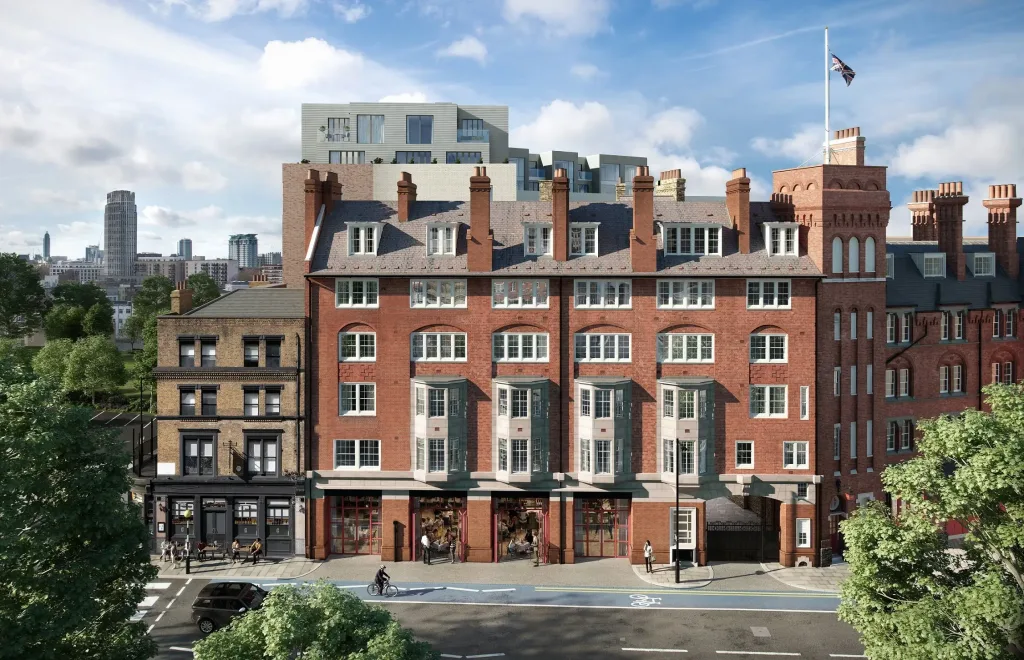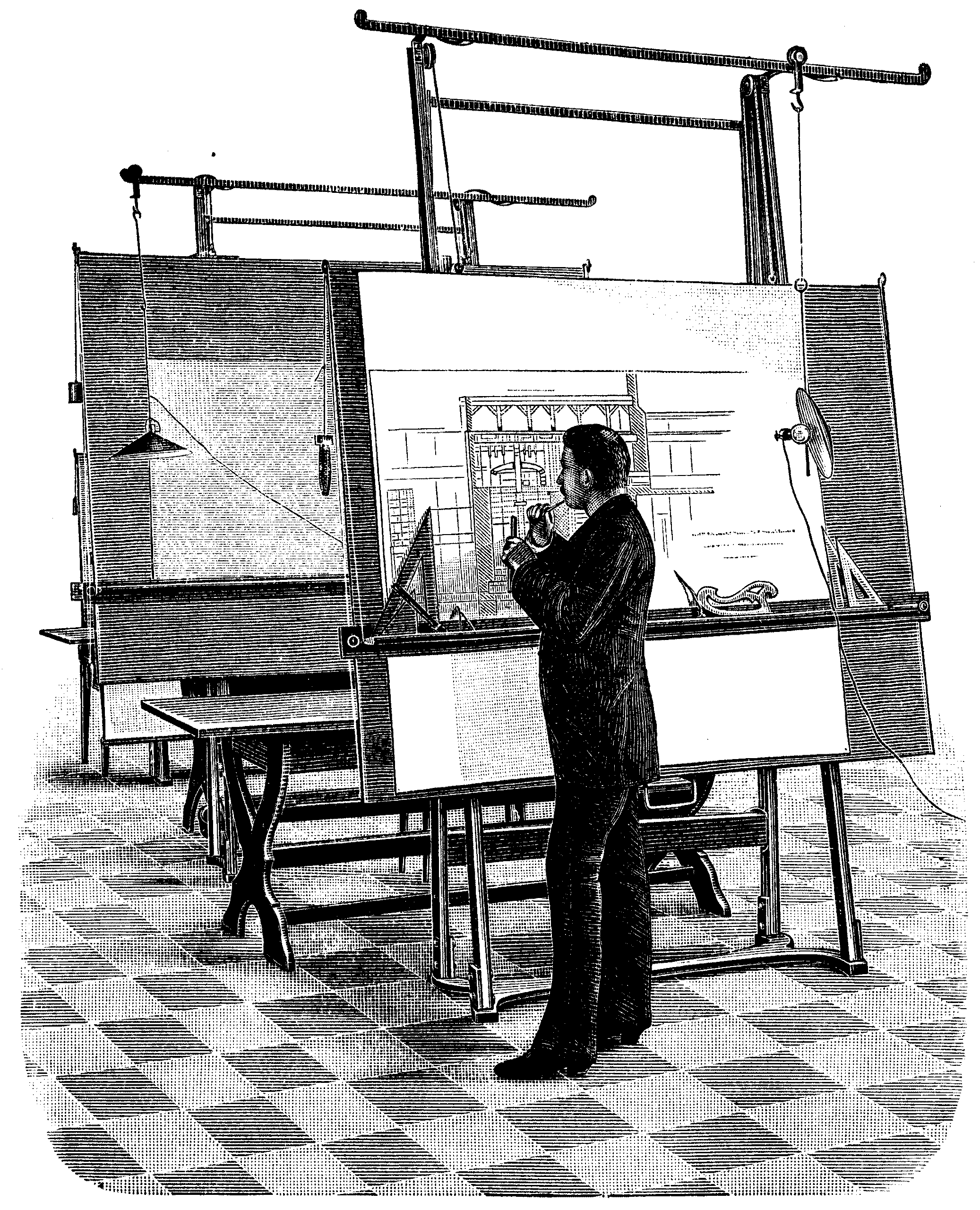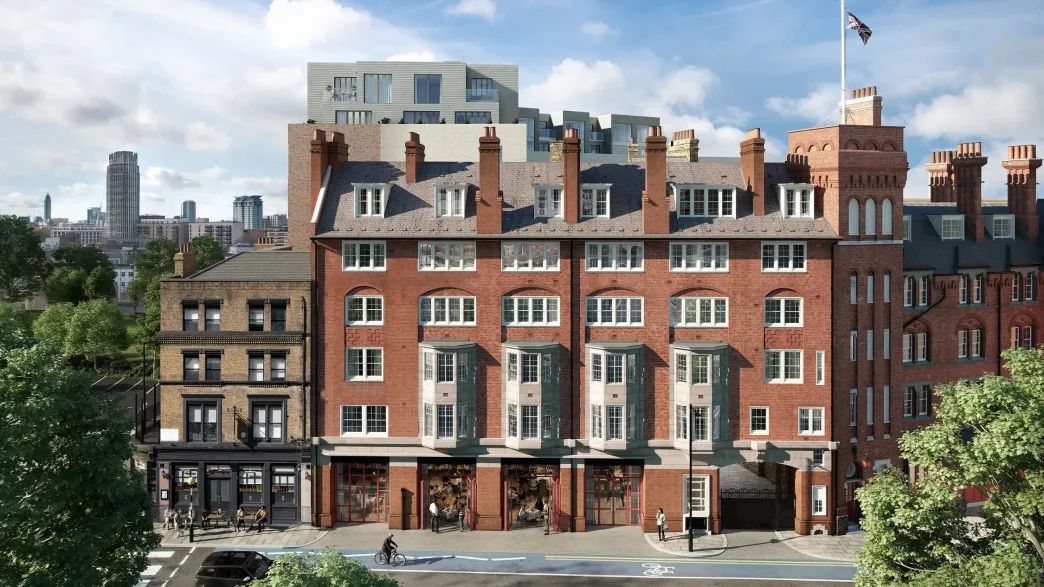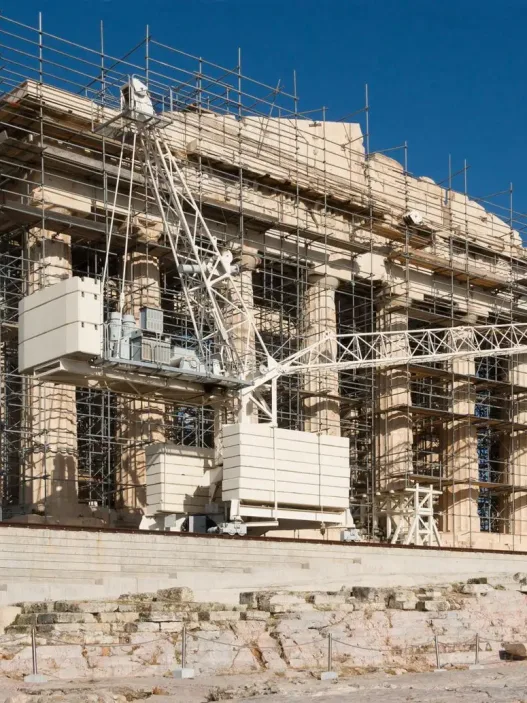London’s architectural landscape is a living tapestry woven with centuries of history, innovation and cultural diversity. As one of the world’s most iconic cities, it has a rich array of buildings reflecting various eras, styles and influences. From medieval churches to modern skyscrapers, the city creates a unique dialogue between past and present.London’s architectural landscape is a vibrant tapestry woven from centuries of history, innovation, and cultural diversity. As one of the world’s most iconic cities, it boasts a rich array of structures that reflect various periods, styles, and influences. From medieval churches to modern skyscrapers, the city embodies a unique dialogue between the past and the present.

Overview of London’s Architecture
London’s architectural heritage is a fascinating journey, showcasing styles that have evolved and transformed over time. The city is home to extraordinary buildings such as the Tower of London, which dates back to the 11th century, and St. Paul’s Cathedral, an icon of Baroque architecture completed in the early 18th century. Wander its streets and you’ll encounter Victorian townhouses, Art Deco cinemas and futuristic glass towers like The Shard. Each building tells a story that reflects the social values, technological advances and artistic movements of its time.
Mix of Historic and Modern Styles
One of the most fascinating aspects of London’s architecture is its seamless blend of historic and modern styles. This mix can be seen in neighborhoods like Shoreditch, where old warehouses have been converted into trendy lofts and cafes, and in the City of London, where the medieval structure of St. Ethelburga’s Church stands next to the sleek, contemporary towers of the financial district. This mix creates a unique urban fabric that respects the past while embracing the future. Today, architects strive to maintain this balance and ensure that new developments complement rather than overshadow historic buildings.
The Importance of Architectural Conservation
Preserving London’s architectural heritage is vital to maintaining the city’s identity and cultural significance. Historic buildings are not just relics of the past; they are living parts of society, offering insights into the lives of those who came before us. Preservation efforts help protect them from neglect and destruction, enabling future generations to appreciate their beauty and historic context. Organizations such as English Heritage play a vital role in this mission, advocating for conservation and encouraging public participation in the city’s architectural heritage.
The Role of Architects in Contemporary London
In today’s London, architects play a crucial role in shaping the city’s skyline and urban environment. They are tasked with designing buildings that are not only aesthetically pleasing, but also functional and sustainable. Innovative solutions such as green roofs, energy-efficient materials and smart technology are increasingly becoming standard practice. Architects such as Richard Rogers and Zaha Hadid have pushed the boundaries of design, creating structures that challenge traditional forms and invite public interaction. His work exemplifies how modern architecture can harmoniously coexist with historical elements and enrich the urban landscape.
Purpose of the Blog Post
The aim of this blog post is to take readers on an engaging journey through London’s architectural masterpieces, highlighting the dynamic interplay between historic landmarks and contemporary design. By exploring key concepts and real-world applications, we aim to encourage an appreciation of the city’s architectural diversity and a deeper understanding of how these structures shape our experiences. Whether you are a local resident or a visitor, London’s architecture offers endless opportunities for exploration and discovery and invites everyone to join its ongoing story.
A city steeped in history, London displays a remarkable mix of architectural styles that reflect its dynamic evolution over the centuries. From medieval castles to modern skyscrapers, each building tells a story, embodying the spirit of its time and contributing to the vibrant fabric of urban life. This exploration examines some of London’s most iconic historic landmarks, revealing their significance and how they fit with contemporary design.
Iconic Historical Landmarks
Tower of London
An enduring symbol of the city, the Tower of London has stood for nearly a thousand years. First built in 1066 by William the Conqueror, the castle has served a variety of roles, from royal palace to prison and even treasury. Its architecture, characterized by solid stone walls and the central White Tower, reflects the military might of the Norman Conquest.
Today, the Tower is not just a historic site, but a living museum that houses the Crown Jewels and attracts millions of visitors each year. The juxtaposition of its ancient stones against the backdrop of the modern city is a testament to London’s ability to preserve its past while embracing the future. Recent renovations have enhanced visitor experiences by blending technology with history, such as interactive screens that bring the stories of notorious prisoners to life.
Westminster Abbey
With its stunning Gothic architecture, Westminster Abbey has hosted numerous royal ceremonies, including coronations and weddings. Founded in the 7th century and rebuilt in the 13th century, the abbey is a masterpiece of medieval craftsmanship, adorned with intricate stone carvings and magnificent stained glass windows.
A UNESCO World Heritage Site, Westminster Abbey remains a focal point for national celebrations and commemorations. Its rich history is intertwined with the contemporary world, as the abbey links the past to the present by hosting events such as the annual Remembrance Service. The mix of solemnity and grandeur in its design continues to amaze and has become an important part of London’s identity.
St. Paul’s Cathedral
Designed by Sir Christopher Wren, St. Paul’s Cathedral is a striking example of English Baroque architecture. Completed in 1710 and dominating the London skyline, its iconic dome reflects its resilience, having survived the Blitz during the Second World War. The interior of the cathedral is equally impressive, with beautiful mosaics and a whispering gallery that captivates visitors.
Beyond its architectural beauty, St. Paul’s serves as a spiritual and cultural center for Londoners. The annual commemoration of those who died in the Great War emphasizes the city’s role in the traditions of remembrance. The integration of modern art installations into its historic walls demonstrates how contemporary creativity can coexist with revered traditions and invites new interpretations of its significance.
British Museum
The British Museum is not only a treasure trove of global artifacts, but also an architectural marvel in its own right. Founded in 1753, the museum’s neoclassical façade invites visitors into a world of history and culture. The addition of the Great Court, designed by Norman Foster, creates a striking contrast with the museum’s glass roof, which allows natural light to flood the space while preserving its historic essence.
The British Museum’s exhibitions bridge the past and present, offering insights into ancient civilizations while addressing contemporary issues. For example, the debate over the repatriation of artifacts has sparked dialogues about cultural heritage and ownership, making the museum a focal point for debates that resonate in the contemporary world. This combination of historical and modern perspectives illustrates the role of the museum as a dynamic space for learning and reflection.
Parliament Building
The Houses of Parliament, also known as the Palace of Westminster, is a shining example of Gothic Revival architecture. With its iconic clock tower Big Ben, the building has witnessed the development of British democracy since its construction in the 19th century. The intricate details of its exterior and the grandeur of its interiors reflect the importance of the parliamentary system.
In recent years, the Houses of Parliament have undergone extensive renovations aimed at preserving their historic integrity while adapting to modern needs. These efforts include improving accessibility for visitors and increasing the sustainability of the buildings. As the center of political life, they remind us of the enduring nature of governance and civic responsibility, combining the historic weight of the past with the aspirations of future generations.
London’s historic landmarks not only contribute to the city’s architectural diversity, but also serve as important cultural and social centers. The seamless integration of contemporary design with these historic spaces offers a glimpse into how the past informs the present, creating a rich narrative that continues to evolve. Exploring these masterpieces invites us to appreciate the stories they hold and the ongoing dialogue between history and modernity.
London is a city where history and modernity coexist beautifully. The city’s skyline is a tapestry woven through centuries of architectural evolution, showcasing everything from medieval structures to the latest designs. Contemporary architectural innovation in London not only reflects technological advances, but also embodies cultural shifts and societal needs. These landmarks are not just buildings; they are symbols of London’s dynamic spirit and resilience.
Contemporary Architectural Innovations
As the world evolves, so does the way we design and experience our spaces. London’s embrace of this change has led to a wave of contemporary architectural innovations that are redefining the city’s landscape. Each building tells a story of creativity, ambition and commitment to sustainability. These innovations often blend the old with the new, creating a dialogue between history and modernity that characterizes London’s unique charm.
The Shard
Towering majestically above the city, The Shard is an iconic symbol of modern London. Designed by architect Renzo Piano and completed in 2012, it is the tallest building in the United Kingdom. Its glass facade reflecting the changing sky creates a striking visual presence. The design of the building is inspired by the towers and glass fragments of London’s churches, evoking a sense of longing and transparency.
Inside The Shard there are offices, restaurants and a hotel, but the most spectacular part of the building is the observation deck on the 72nd floor, which offers breathtaking views of the city. This connection to the skyline emphasizes the relationship between architecture and the environment, inviting visitors to consider London from a new perspective. The Shard is not just an engineering marvel; it represents a vision of urban transformation and a commitment to creating inspiring places.
Gherkin
Another prominent building on the London skyline is The Gherkin, formally known as St Mary Axe. Designed by Norman Foster, this building has become synonymous with modern London since its completion in 2004. Its distinctive, curved shape, reminiscent of a gherkin, and sleek glass exterior are both functional and aesthetic, designed to reduce energy consumption while maximizing natural light.
Gherkin’s innovative design incorporates a unique ventilation system that allows for natural ventilation, reducing the need for air conditioning. This commitment to sustainability makes the building a model for future skyscrapers. Inside the building are offices, restaurants and public spaces, fostering a sense of community among its inhabitants. The Gherkin is a testament to how modern architecture can harmonize beauty with functionality and environmental awareness.
Tate Modern
Housed in a former power station, Tate Modern is an example of how contemporary design can breathe new life into historic buildings. Opened in 2000, this museum of modern art was designed by Herzog & de Meuron and has become one of the most visited art institutions in the world. The building retains much of its industrial character while incorporating new elements that enhance its functionality and the visitor experience.
The spacious Turbine Hall, with its soaring ceilings and open space, allows for large-scale installations that challenge traditional notions of art. This fusion of old and new not only preserves the historic significance of the site, but also creates a vibrant cultural center that attracts millions. Tate Modern exemplifies how adaptive reuse can be a powerful tool for architectural innovation, promoting sustainability while enriching the urban fabric.
London Eye
The London Eye, a giant Ferris wheel on the South Bank of the River Thames, is another remarkable example of contemporary design. Designed by David Marks and Julia Barfield, the London Eye was originally intended as a temporary structure but quickly became a permanent fixture of the London skyline. Standing meters high, the Eye offers unparalleled views of the city and has changed the way locals and tourists experience London.
Each of its glass capsules is climate-controlled and provides a unique perspective of the city’s landmarks. The design reflects a commitment to the visitor experience, blending engineering skill with artistic vision. The London Eye is not just a means of entertainment; it represents a modern approach to public space, encouraging social interaction and connection to the city.
Walkie Talkie
Completing this exploration of London’s contemporary architectural innovations is the Walkie Talkie, formally known as Fenchurch Street. Designed by architect Rafael Viñoly and completed in 2014, this building is famous for its distinctive shape, which expands at the top to create a unique sky garden. This public space, accessible to all, offers spectacular views of the city and green spaces for relaxation, demonstrating a commitment to integrating nature into urban life.
Walkie Talkie has also been noted for its innovative use of technology, including a climate control system that maximizes energy efficiency. However, it faced challenges during its construction, including a reflective glass facade that inadvertently focused sunlight, causing overheating in the streets below. This incident highlights the importance of thoughtful design and the need for architects to consider the impact of their creations on the environment.
In sum, London’s contemporary architectural innovations are not just about aesthetics; they embody a deeper narrative of sustainability, community and the changing needs of urban life. They invite us to explore, engage and rethink our relationship with the built environment to ensure London remains a vibrant and inspiring city for generations to come.
Case Studies Combining Styles
London’s architectural landscape is a fascinating tapestry of history intertwined with modernity. The city is home to numerous buildings that reflect this mix and demonstrate how contemporary design can respect and enhance historical contexts. Let’s explore a few case studies that exemplify this beautiful marriage of style.
Barbican Center
The Barbican Centre stands as a bold testament to Brutalist architecture, a style characterized by raw concrete and geometric forms. Opened in 1982, the Barbican is not only an art complex but also a cultural center that includes a concert hall, theater and art gallery. The design by architects Chamberlin, Powell and Bon was deeply influenced by the post-war vision of urban life.
The integration of the center with the surrounding area is a prime example of how contemporary architecture can enhance historic sites. The Barbican’s austere exterior is softened by lush, landscaped gardens that invite visitors to explore. This juxtaposition of hard and soft elements not only creates a visually striking environment, but also emphasizes the importance of community space in urban environments.
The Center’s ongoing programs, such as film screenings and art exhibitions, continually attract diverse audiences, demonstrating how modern use can breathe new life into a historic building and ensure its relevance in today’s cultural climate.
Design Museum
Located in the heart of Kensington, the Design Museum underwent a significant transformation when it moved into the former Commonwealth Institute building. Architect John Pawson’s redesign was carefully executed to incorporate sleek, contemporary aesthetics while honoring the building’s mid-century modernist roots.
The museum’s interior is characterized by open spaces flooded with natural light, creating a warm atmosphere for visitors. The minimalist design allows the exhibitions to take center stage, reflecting the museum’s mission to celebrate design in all its forms.
This fusion of old and new is exemplified in the museum’s program of workshops and talks that engage the public in discussions about the role of design in society. By revitalizing a historic site, the Design Museum is not only preserving architectural heritage, but also positioning itself as a leader in contemporary design discourse.
Royal Albert Hall Renovation
An iconic Victorian concert venue, the Royal Albert Hall has undergone numerous renovations since its opening in 1871. One of the most notable updates was the introduction of a new, state-of-the-art stage and backstage facilities.
The renovations were carried out in a way that modernized key aspects of the Hall, such as acoustics and accessibility, while preserving the building’s grand architectural style. Updates included restoring ornate features and enhancing the overall visitor experience without compromising the historic integrity of the space.
This balance of preservation and innovation illustrates a fundamental principle in architectural practice: honoring the past while embracing the future. The Royal Albert Hall remains a renowned venue for performances and shows how careful renovations can sustain a building’s heritage.
National Gallery Extension
The National Gallery in Trafalgar Square is home to one of the world’s finest art collections. In 2016, the gallery inaugurated a new extension designed by architect David Chipperfield. The extension respects the gallery’s neoclassical architecture while providing much-needed space for exhibitions and visitor facilities.
Chipperfield’s design features a contemporary façade that complements the existing structure without overshadowing it. The use of glass and natural light in the extension invites visitors to experience art in a more immersive environment.
This careful integration of new and existing elements allows the National Gallery to adapt to modern curatorial practices while maintaining its historical significance. This extension is an excellent example of how architecture can evolve to reflect changing needs while honoring the past.
Revitalization of the Old Vic Theater
The Old Vic Theatre is a historic venue that has been a cornerstone of British theater since 1818. In recent years, it has undergone a major revitalization effort led by artistic director Matthew Warchus.
The theater’s renovation focused on enhancing the audience experience while maintaining its historic charm. Improvements include updated seating, improved acoustics and better accessibility, all without compromising the theater’s traditional aesthetic.
The Old Vic’s commitment to producing innovative and diverse performances while embracing its heritage demonstrates how historic venues can remain relevant and vibrant in the modern cultural landscape. By combining contemporary needs with historical context, the Old Vic continues to thrive as a beloved institution.
Ultimately, these case studies exemplify London’s unique ability to blend historic architecture with contemporary design. Through careful renovations and new construction, the city is not only preserving its architectural heritage, but also enhancing the cultural fabric of modern life. This ongoing dialog between past and present is what makes London a truly dynamic city, rich in both history and innovation.
The Impact of Urban Planning on Architecture
Urban planning is the blueprint for a city’s growth and transformation, shaping the landscape in which architecture evolves. In London, a city rich in history and innovation, the interplay between urban planning and architecture creates a dynamic environment where historic landmarks come together with contemporary design. This interaction not only shapes the skyline, but also influences how people interact with their environment.
Historical Context of Urban Development
To understand the impact of urban planning on architecture, we need to look at the evolution of London. The city has a long history of urban development dating back to Roman times. As London expanded, various planning movements emerged, reflecting social changes. The Great Fire led to a significant rethinking of urban design, resulting in wider streets and more organized layouts. This marked a shift towards a more structured approach to urban planning.
In the 19th century, the industrial revolution transformed London again with population growth and the need for housing, transportation and public space. During this period, urban planners began to consider the social implications of design and created neighborhoods that met the needs of the growing urban population. The result is a mix of residential, commercial and public spaces characterized by different architectural styles, often reflecting the periods in which they were built.
Current Urban Planning Trends
Today, London faces the dual challenge of preserving its historic character while meeting modern needs. Current urban planning trends emphasize sustainability, inclusivity and resilience. Planners are increasingly focused on creating mixed-use developments that encourage community interaction and reduce dependence on cars. This approach integrates living, working and recreational spaces, fostering a sense of belonging among residents.
The rise of smart city initiatives also plays an important role in contemporary urban planning. Technology is being leveraged to improve infrastructure, enhance public services and facilitate efficient transportation. For example, the use of data analytics helps to understand traffic patterns, informing the design of roads and public transportation systems. This modern perspective ensures that architectural designs are not only aesthetically pleasing, but also functional and responsive to the needs of society.
The Role of Green Spaces
Green spaces are vital components of urban planning, providing important breathing space in densely populated cities like London. Parks, gardens and open spaces offer residents a respite from the hustle and bustle of the city, promoting mental wellbeing and physical health. Integrating green spaces into architectural designs improves the overall quality of life.
In recent years, there has been a renewed focus on creating environmentally friendly environments. Projects such as the Queen Elizabeth Olympic Park exemplify this trend, transforming former industrial land into vibrant green spaces that serve both recreational and environmental purposes. These spaces not only beautify the city, but also support biodiversity and combat urban heat, demonstrating the importance of nature in urban design.
Transportation Infrastructure Impacts
Transportation infrastructure significantly shapes urban architecture. In London, the vast network of buses, trains and the iconic tube influences where buildings are built and how they function. The design of public transport systems often dictates the flow of people, which in turn influences the surrounding architecture.
For example, the areas surrounding major transport hubs such as King’s Cross have undergone dramatic transformations with new developments emerging to accommodate the influx of passengers. This has led to the emergence of a unique urban fabric where old railroad buildings coexist with stylish and contemporary buildings, blending historical and modern architecture.
Future Prospects for Urban Architecture
Looking ahead, the future of urban architecture in London looks promising, characterized by adaptability and innovation. As the city continues to develop, architects and planners will need to embrace new technologies and sustainable practices. Concepts such as vertical gardens, green roofs and energy-efficient buildings are becoming increasingly common and reflect a commitment to environmental stewardship.
Moreover, a focus on community-centered designs is likely to drive future developments. By prioritizing the needs and voices of local residents, urban planners can create spaces that promote connectivity and inclusivity. As London meets the challenges of modernization, the synergy between urban planning and architecture will remain important, ensuring that the city retains its distinctive character while embracing the future.
In conclusion, the influence of urban planning on architecture in London is profound and multifaceted. From the historical contexts that shaped the city’s development to current trends emphasizing sustainability and community, the relationship between planning and architecture continues to evolve. Looking to the future, this interaction will be crucial in defining London’s architectural landscape, balancing its rich heritage with the demands of modern life.
The Future of London’s Architectural Identity
Looking to the future of London’s architectural landscape, it is clear that the city stands at a fascinating crossroads. The interplay between historic landmarks and contemporary design is not just a matter of aesthetics; it reflects the wider cultural and social evolution of one of the world’s most vibrant cities. London’s architecture tells a story that continues to evolve, combining old and new in a way that honors the past while embracing the future.
Summary of Highlights
Throughout this exploration of London’s architectural identity, we have seen the striking juxtaposition of grand historic buildings such as the Tower of London and St. Paul’s Cathedral with innovative modern structures such as The Shard and the London Eye. These landmarks symbolize the city’s rich heritage and its willingness to adapt and evolve. Each building contributes to a narrative that captures not only London’s essence as a historic center, but also its role as a leader in contemporary design. This synthesis creates a unique architectural tapestry that is both fascinating and reflective of the city’s diverse population.
The Importance of Community Engagement
As London continues to grow, the role of community engagement in shaping its architectural future cannot be overlooked. Involving local communities in the design process encourages a sense of ownership and pride in new developments. It encourages architects and urban planners to consider the needs and aspirations of those who live and work in these areas. For example, projects such as the regeneration of King’s Cross have actively involved local residents, ensuring that the architectural outcomes reflect the identity and aspirations of the community. This collaborative approach not only improves the quality of the built environment, but also strengthens community ties, making architecture a shared experience.
Insights for Future Projects
Looking ahead, there are many exciting projects on the horizon for London. The city’s commitment to sustainability is likely to drive the design of new buildings and public spaces. Initiatives such as the Garden Bridge, while controversial, highlight the potential for integrating green spaces into urban architecture. Similarly, there will continue to be a growing emphasis on mixed-use developments that encourage vibrant neighborhoods where people can live, work and play in close proximity. With architects experimenting with materials and technologies that reduce carbon footprint while enhancing aesthetic appeal, we can expect a wave of innovative designs that prioritize environmental responsibility.
Balance between Old and New
Striking a balance between preserving historic architecture and allowing modern innovations is a delicate task. London has been successful in this, often seeing new projects as opportunities to enhance rather than overshadow the existing urban fabric. The redevelopment of sites such as Southbank shows how new buildings can respect and complement their historic surroundings. By incorporating traditional design elements into contemporary projects, architects can create spaces that honor the past while providing functionality for today’s needs. This balance ensures that London’s architectural identity remains rich and layered, inviting both residents and visitors to explore and appreciate.
Final Thoughts on London’s Architectural Evolution
In conclusion, London’s architectural evolution is a testament to its resilience and creativity. As the city navigates the complexities of modern urban life, its buildings will continue to reflect the dynamic interplay between history and innovation. London’s architectural landscape is not just about buildings; it is about the experiences they create and the stories they tell. By valuing both its historic roots and its potential for future development, London can maintain its status as a leading global city, where every building contributes to a narrative as diverse and vibrant as its inhabitants. The future of London’s architecture is bright and promises a continued celebration of its unique identity and an exciting journey.






















